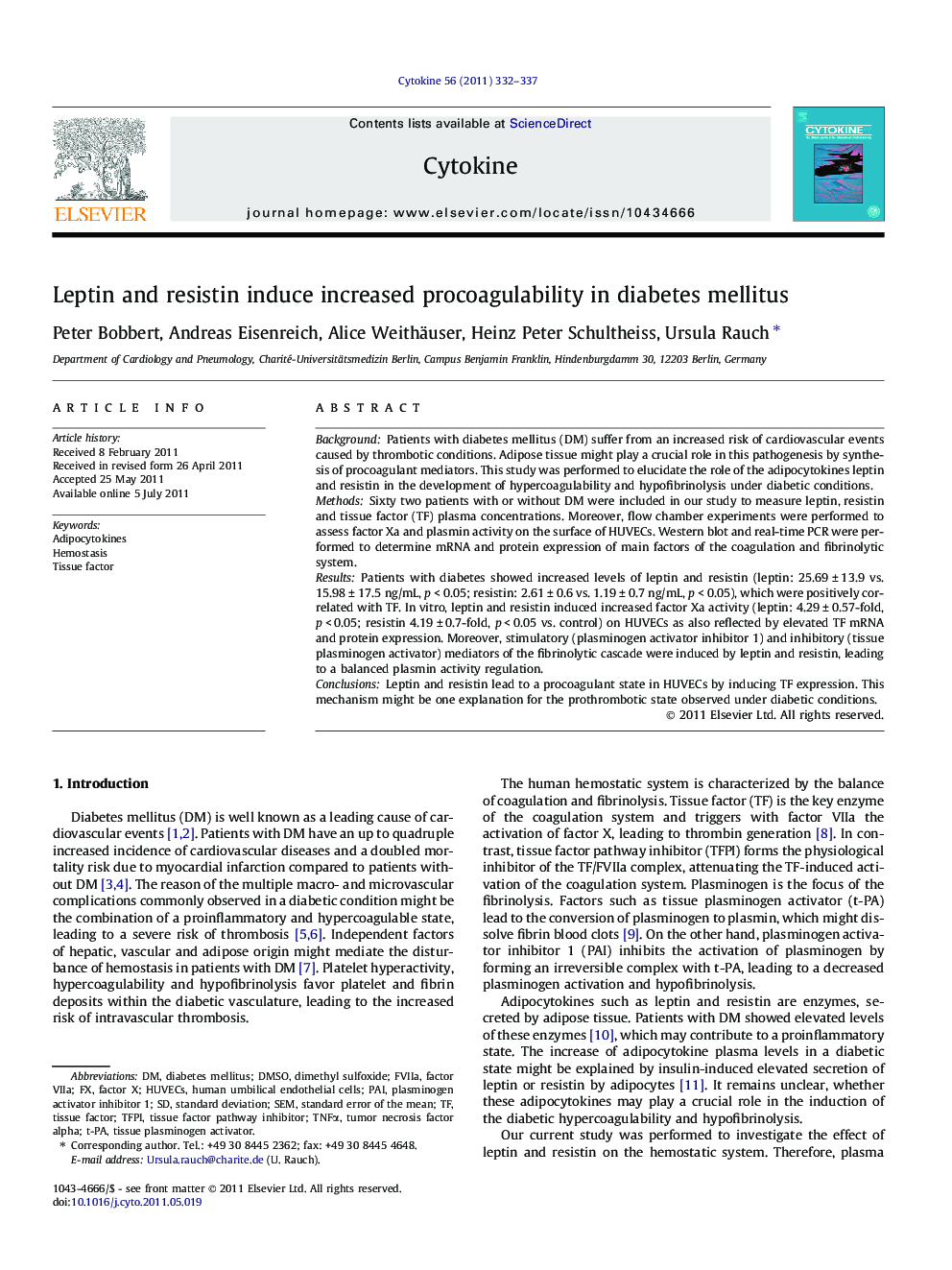| Article ID | Journal | Published Year | Pages | File Type |
|---|---|---|---|---|
| 5898170 | Cytokine | 2011 | 6 Pages |
BackgroundPatients with diabetes mellitus (DM) suffer from an increased risk of cardiovascular events caused by thrombotic conditions. Adipose tissue might play a crucial role in this pathogenesis by synthesis of procoagulant mediators. This study was performed to elucidate the role of the adipocytokines leptin and resistin in the development of hypercoagulability and hypofibrinolysis under diabetic conditions.MethodsSixty two patients with or without DM were included in our study to measure leptin, resistin and tissue factor (TF) plasma concentrations. Moreover, flow chamber experiments were performed to assess factor Xa and plasmin activity on the surface of HUVECs. Western blot and real-time PCR were performed to determine mRNA and protein expression of main factors of the coagulation and fibrinolytic system.ResultsPatients with diabetes showed increased levels of leptin and resistin (leptin: 25.69 ± 13.9 vs. 15.98 ± 17.5 ng/mL, p < 0.05; resistin: 2.61 ± 0.6 vs. 1.19 ± 0.7 ng/mL, p < 0.05), which were positively correlated with TF. In vitro, leptin and resistin induced increased factor Xa activity (leptin: 4.29 ± 0.57-fold, p < 0.05; resistin 4.19 ± 0.7-fold, p < 0.05 vs. control) on HUVECs as also reflected by elevated TF mRNA and protein expression. Moreover, stimulatory (plasminogen activator inhibitor 1) and inhibitory (tissue plasminogen activator) mediators of the fibrinolytic cascade were induced by leptin and resistin, leading to a balanced plasmin activity regulation.ConclusionsLeptin and resistin lead to a procoagulant state in HUVECs by inducing TF expression. This mechanism might be one explanation for the prothrombotic state observed under diabetic conditions.
⺠Our study elucidated the role of leptin/resistin in hypercoagulability in patients with diabetes. ⺠Patients with diabetes showed increased plasma levels of leptin and resistin in vivo. ⺠Leptin and resistin induced increased TF expression in HUVECs. ⺠Leptin and resistin led to a procoagulant state in HUVECs. ⺠Diabetic hypercoagulability might be explained by increased expression of leptin/resistin.
